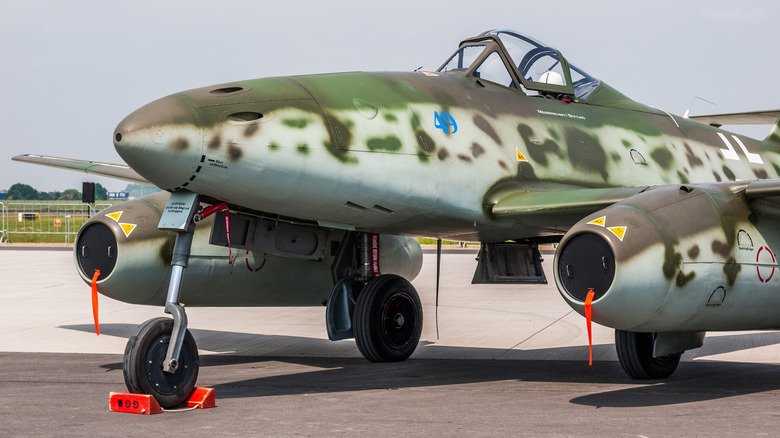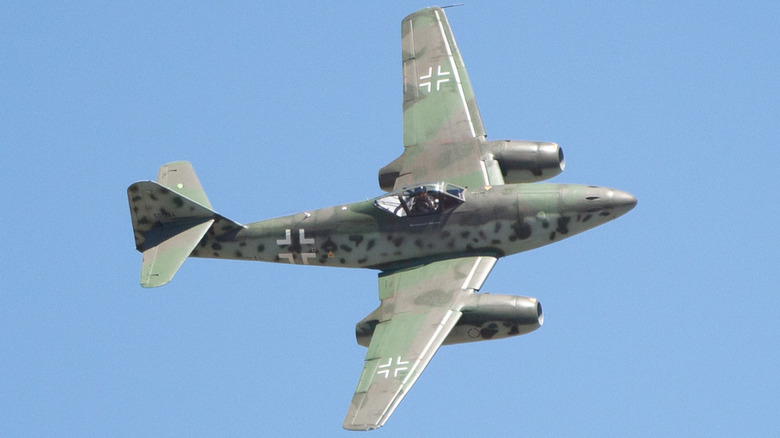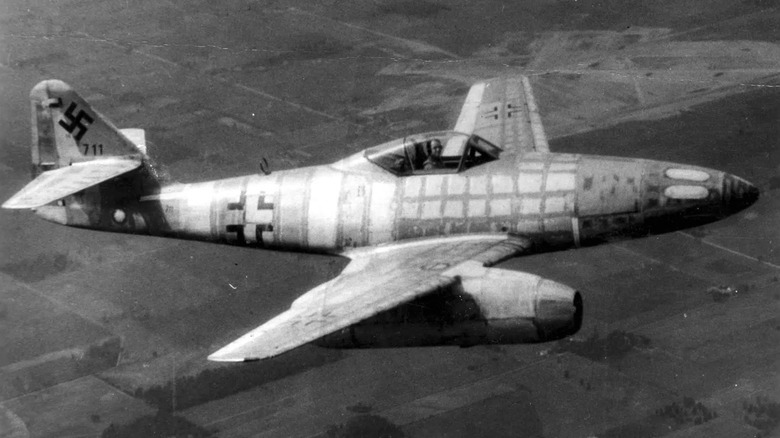Who Really Invented The First Fighter Jet & How Fast Did It Fly?
When we think about the dawn of jet-powered warfare, the name Messerschmitt Me 262 often gets top billing. But the story starts a bit earlier than you might think. The true roots of the jet age trace back to two brilliant engineers working on opposite sides of the English Channel, namely Germany's Hans von Ohain and Britain's Frank Whittle.
A Stanford.edu article details that Whittle patented a turbojet design as early as 1930, but his first jet-powered aircraft didn't fly until 1941. Ohain, meanwhile, got there first. Working with the Heinkel aircraft company, he developed the Heinkel He 178, which became the world's first jet aircraft to fly, taking off on August 27, 1939, just days before Germany invaded Poland. Though the He 178 was experimental and never saw combat, it proved that jet propulsion was viable. That breakthrough paved the way for Germany to take the next step of designing a jet-powered fighter for wartime use.
That step turned into the Messerschmitt Me 262, the first operational jet fighter. The Me 262 was conceived in 1938, though it wouldn't fly under full jet power until mid-1942. Powered by Anselm Franz's Junkers Jumo 004 engines, the Me 262 Schwalbe (Swallow) fighter variant was the combat-ready version that finally entered Luftwaffe service. It was far ahead of anything else in the sky at the time. Germany hoped that the jet would turn the tide of the war in its favor.
Built for speed but not for stamina
Boasting a top speed of around 870 kph (540 mph), the Me 262 was a full 193.2 kph (120 mph) faster than the North American P-51 Mustang, the darling of the Allied air forces. One pilot, Hans Guido Mutke, even claimed he might have broken the sound barrier in the plane during a steep dive in April 1945. The Me 262 was also lethal, armed with four 30mm MK 108 cannons. There was a Sturmvogel (Stormbird) bomber variant, too, which was often loaded with rockets or bombs.
But for all its muscle, the Me 262 came with major caveats. Its turbojets consumed too much fuel, which led to it spending too much time on the ground, leaving it vulnerable. The plane was a sitting duck during takeoff and landing, too, because its engines took time to spool up. Allied pilots quickly learned to loiter near Luftwaffe bases, catching the jets as they tried to lift off or come home.
The Me 262 also had a punishingly short engine lifespan of only about 25 flight hours, thanks to wartime material shortages. The shortages meant that engineers were forced to substitute heat-resistant metals like nickel and cobalt with inferior alternatives, making these engines notoriously fragile.
The Me 262 flew into history more than a battle
It's chilling to imagine how history might have changed if the Me 262 had been deployed earlier and in greater numbers. Although more than 1,400 units were built, fewer than 300 actually made it into combat. For years, Hitler's purported insistence on using the aircraft as a bomber was blamed for the delay. But the National Air and Space Museum notes that the real setbacks had more to do with difficulties with developing a jet engine.
Yet even if its impact on the war was limited, its influence on aviation technology was anything but. It introduced design features that would become aviation standards, like swept wings, underslung engine nacelles, and concentrated nose-mounted armament. It even paved the way for postwar innovation. Captured Me 262s were shipped to the U.S. as part of Operation Lusty, where they were reverse-engineered and compared to America's emerging jets.


